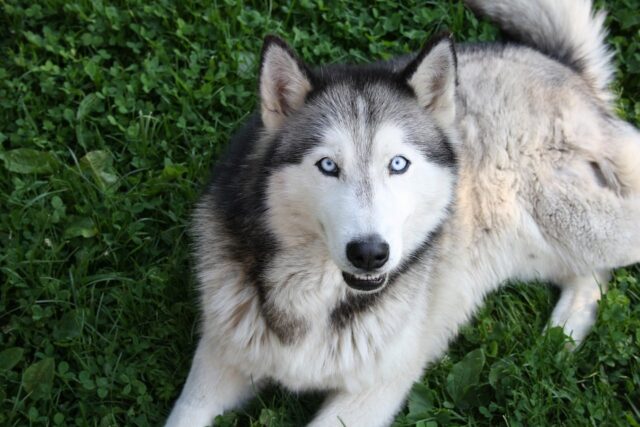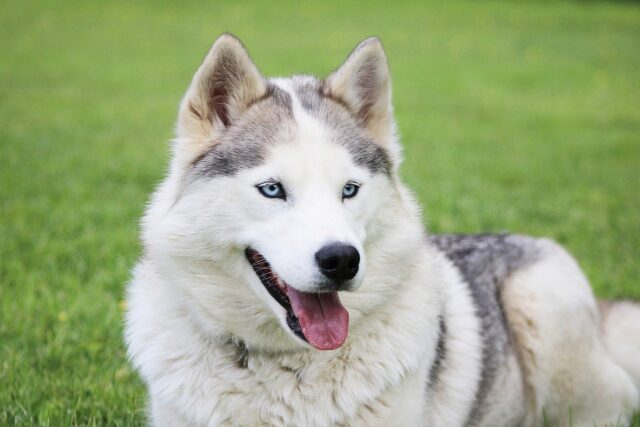Siberian Huskies, known for their striking blue eyes, fluffy coats, and boundless energy, are among the most recognizable dog breeds. These dogs are beautiful and full of personality, often showcasing a mix of stubbornness, playfulness, and a hint of mischief. Huskies are known for their love of adventure and the outdoors, often exhibiting a zest for life that can be both entertaining and exhausting for their owners. But even these lively dogs eventually enter their senior years despite their youthful exuberance. Typically, a Husky is considered a senior, around 8 to 10 years old, although some may show signs of aging earlier or later depending on their genetics and lifestyle. As they age, Huskies may trade their long runs for more leisurely strolls and playful antics for cozy naps. Let’s explore the different stages of a Husky’s life and see how these magnificent dogs age with grace, humor, and a touch of frost in their fur.

1. The Puppy Phase: Fluffy Balls of Energy
In the first year of a Husky’s life, they are bundles of energy, curiosity, and endless fluff. These puppies are incredibly playful and adventurous, often getting into everything with insatiable curiosity. Huskies are known for their high energy levels, making them little tornadoes of mischief. They love to explore, dig, and run around, often testing their owners’ patience. This phase is also characterized by rapid growth and development, both physically and behaviorally. Starting training and socialization early is essential to manage their independent and sometimes stubborn nature. Despite the challenges, Husky puppies are charming and affectionate, quickly endearing themselves to anyone they meet.
2. The Adolescent Years: The Teenage Trouble
From around 1 to 2 years old, Huskies enter adolescence, often marked by a rebellious streak and increased independence. This stage can be challenging for owners, as Huskies may test boundaries and push limits, sometimes leading to destructive behaviors if not properly managed. They are still full of energy and often show a strong desire to explore, sometimes leading them to escape attempts. Consistent training and plenty of physical and mental stimulation are crucial during this phase to keep them occupied and out of trouble. Despite their challenging behavior, adolescent Huskies are still loving and playful, and with the right guidance, they can become well-behaved adults.
3. The Prime Years: Adventurous Companions
Between 2 and 6 years old, Huskies are in their prime. These years are characterized by peak physical fitness and a balanced temperament. Huskies in their prime are active, adventurous, and eager to participate in various activities, from running and hiking to playing in the snow. They are also highly intelligent and enjoy tasks that challenge their minds. At this stage, their love for the outdoors and their need for physical exercise are at their highest. Huskies during this time are excellent companions for active individuals or families, and they thrive on regular exercise and stimulation. They are also known for their vocal nature, often “talking” to their owners in a mix of howls and barks.
4. The Middle Ages: A Slight Slowdown
Huskies start entering their middle-aged years around 6 to 8 years old. While they still have plenty of energy, they may begin to slow down slightly, preferring more moderate activities over the intense exercise they once craved. This phase often brings a more relaxed and mellow attitude, although they enjoy playtime and outdoor adventures. Huskies may also start to develop some physical signs of aging, such as a graying muzzle or a decrease in muscle mass. Despite these changes, they remain active and engaged, enjoying the company of their human and animal companions. Regular veterinary check-ups and a balanced diet are important to maintain their health and well-being during these years.
5. The Senior Years: Wise and Frosty Friends
When a Husky reaches 8 to 10 years old, they are generally considered seniors. This phase is marked by a noticeable reduction in energy levels and a greater appreciation for relaxation and comfort. Senior Huskies may develop age-related health issues such as arthritis, cataracts, or hip dysplasia, affecting their mobility and overall well-being. However, their playful spirit often remains intact, and they continue to enjoy gentle activities and spending time with their families. They may become more cuddly and seek warm, cozy resting spots. Despite the physical changes, senior Huskies are full of love and loyalty, and their bond with their human companions often deepens during this time.
Siberian Huskies, with their striking looks and spirited personalities, bring joy at every stage of life. From the playful puppy phase to the gentle senior years, these dogs are full of energy, character, and love. While they may slow down as they age, their adventurous spirit and affectionate nature never fade. Each stage offers unique experiences and memories, making life with a Husky a thrilling journey. Whether they’re bounding through the snow or curled up on the couch, Huskies have a special way of bringing excitement and warmth to our lives. So, cherish every moment with your Husky, and enjoy the love and laughter they get into your home, from their youthful antics to their golden years.
Frequently Asked Questions Someone Might Have About Their Aging Husky

 Toledo, United States.
Toledo, United States.
